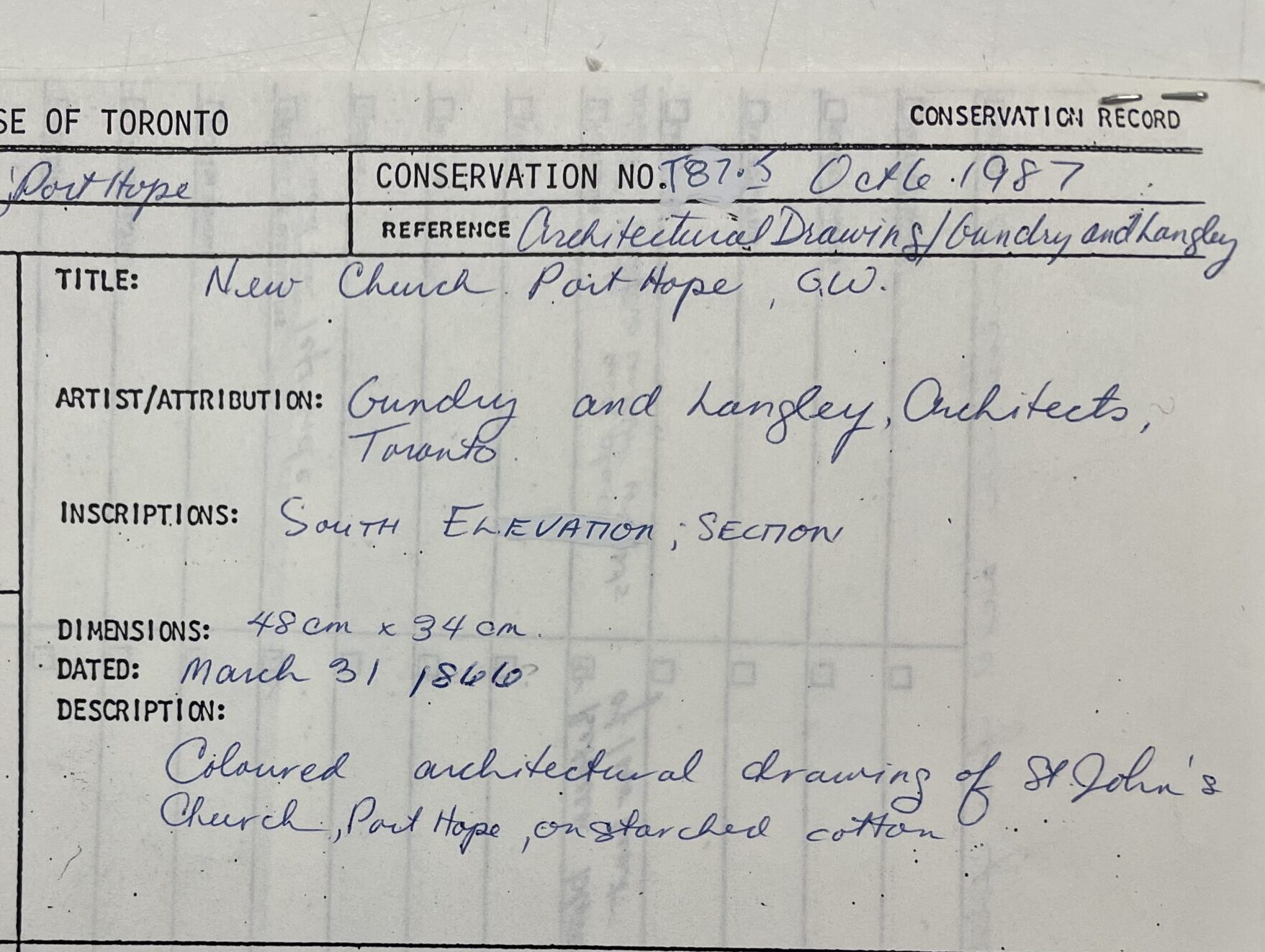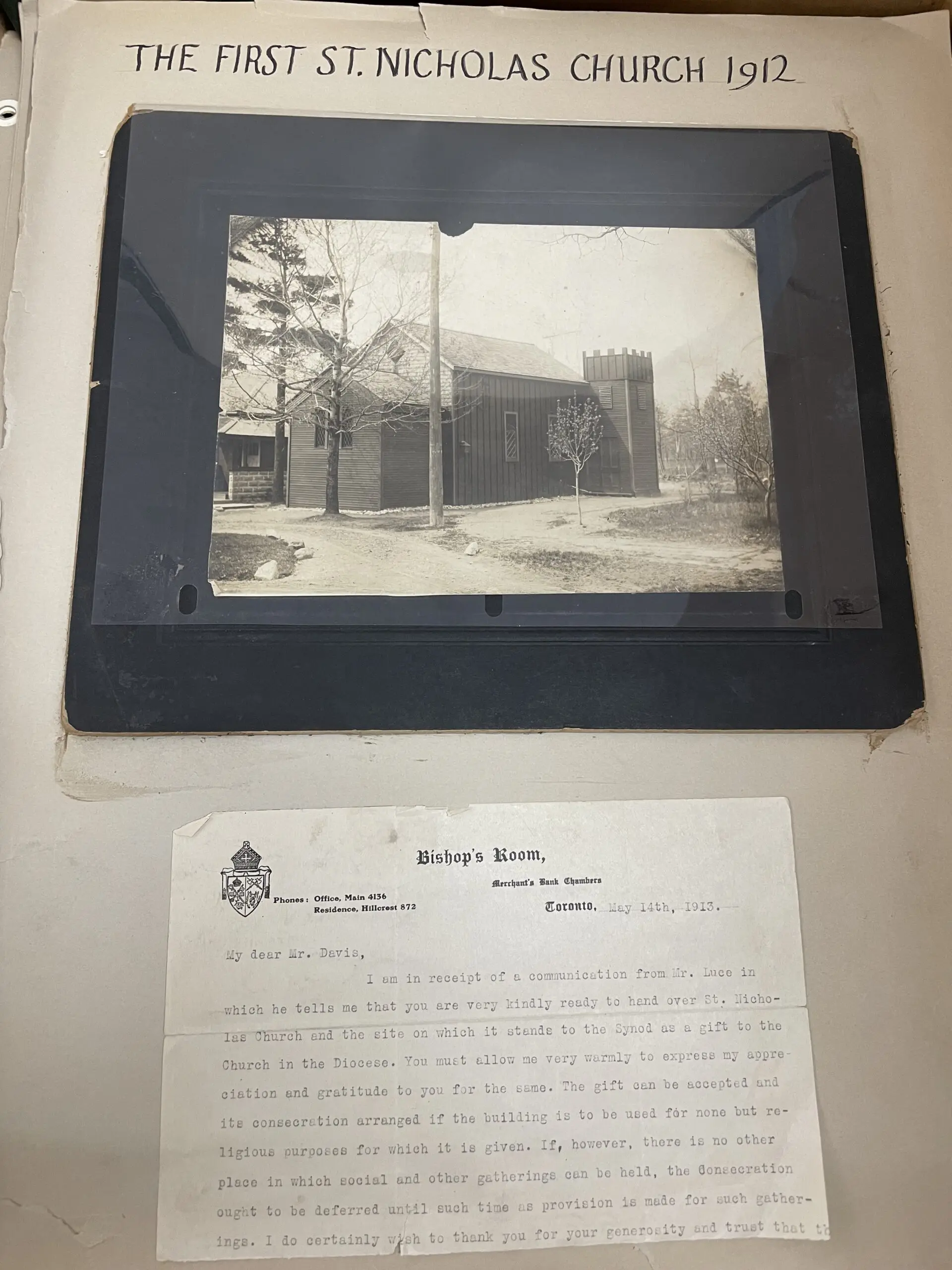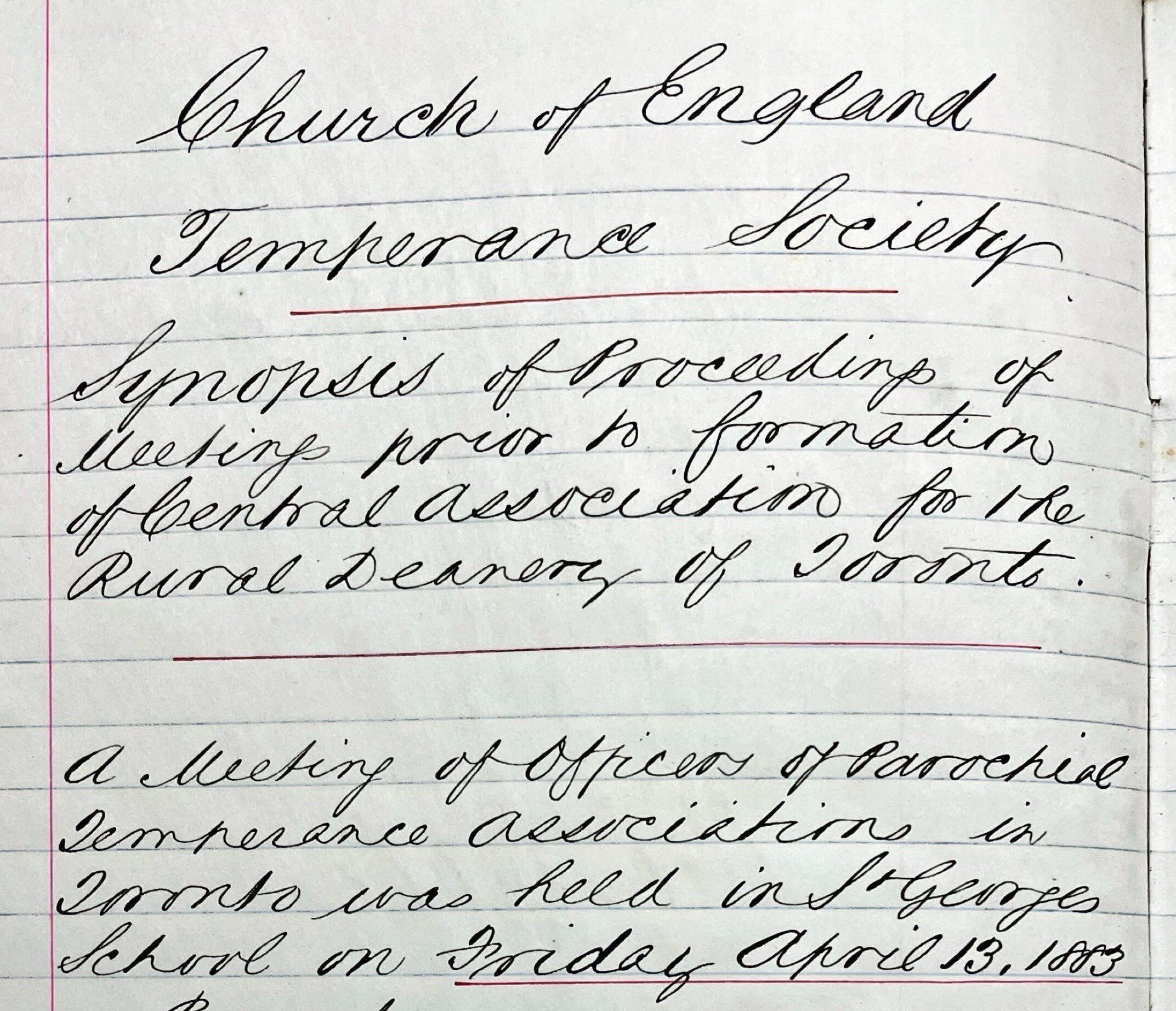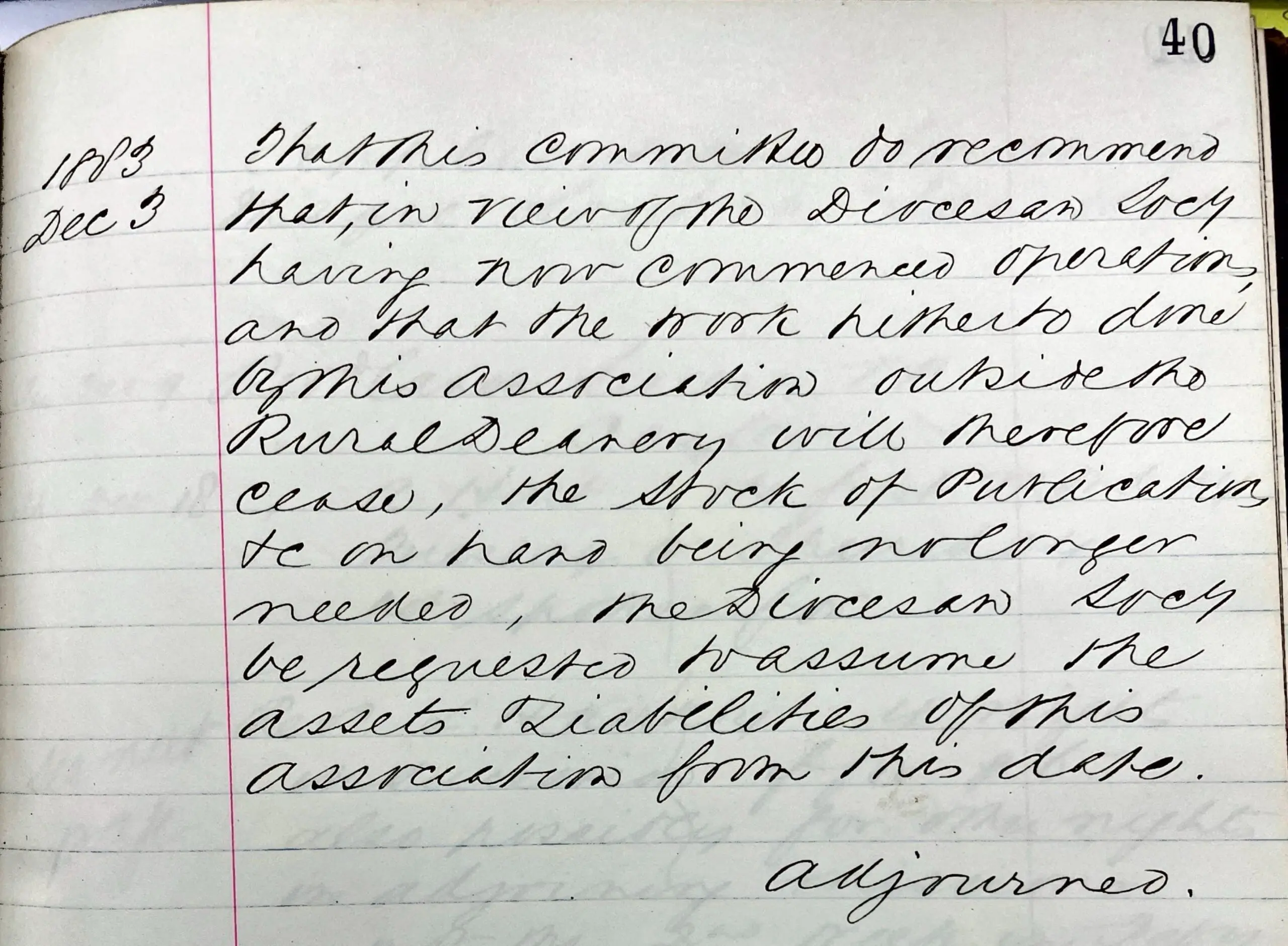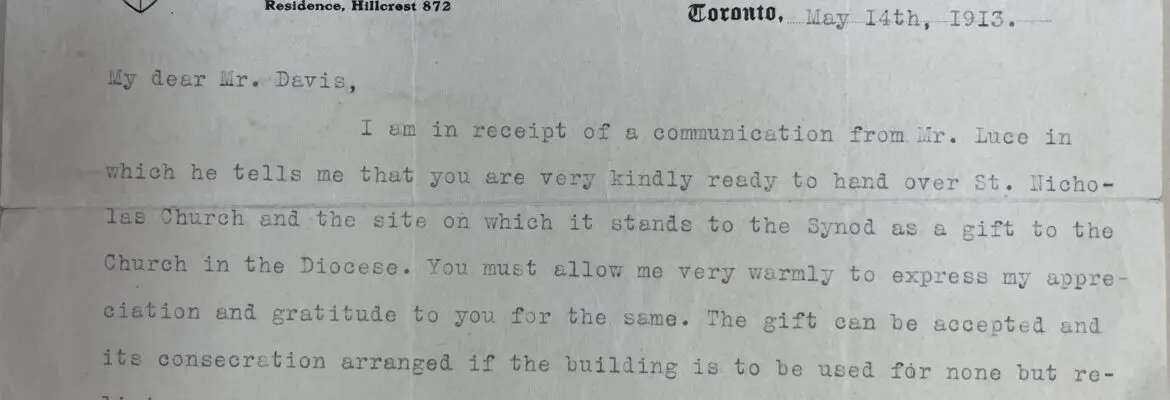
Archives Awareness A-Z
We’re joining the Archives of Ontario in its month-long #ArchivesAtoZ campaign. The aim is to increase the public’s awareness of archives and their collections. We’ll be sharing four posts throughout this month showcasing items from our holdings or providing information about Archives terminology based on each letter of the alphabet.
This week we will cover O to T!
O – The Rev. Henry Bath Osler
The Rev. Canon Henry Bath Osler was a travelling missionary in the Bolton and Lloydtown areas from 1843-1874. In 1874 he became the rector of St. John, York Mills and established the Eglinton Mission, which became St. Clement, Eglinton in 1891. He retired from St. John, York Mills in 1900. On deposit with the Archives is a record book he kept that includes early meetings regarding the establishment of an Eglinton Mission from 1888-1892, annual return information and communicants for St. John, York Mills and the Eglinton Mission from 1891-1895. However, it also includes his written histories of the various missions that he ministered to in the Bolton and Lloydtown areas from 1843-1874. These include Bolton, Lloydtown, Nobleton, Albion, Bolton Mills, Woodbridge, Kettleby, Roley’s Station (Palgrave) and Sandhill.
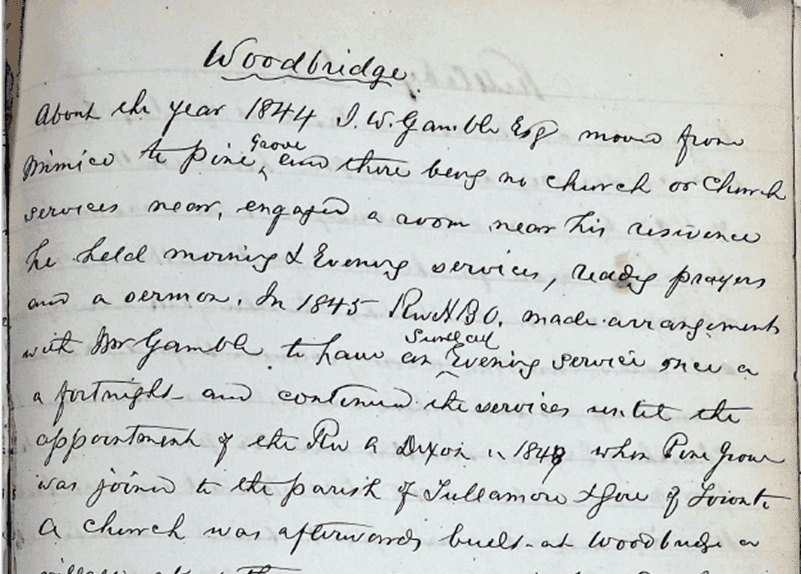
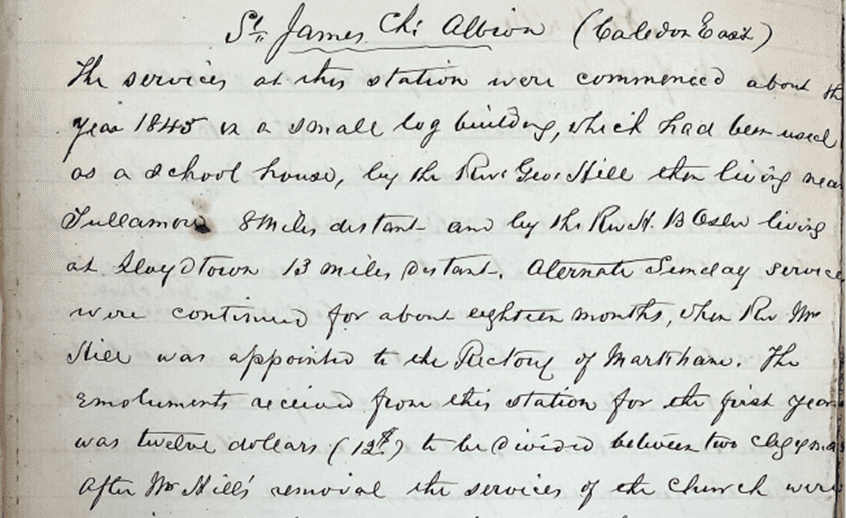
P – Plans & Drawings
Early architectural plans and drawings, which were hand drawn rather than using computer programs, can also be works of art. The Archives holds only a few architectural plans that were created prior to the 1950s. One of these sets of architectural drawings are the 1866 drawings for St. John, Port Hope by Gundry & Langley, which they have coloured. As determined by conservation work completed in 1987, these drawings have been done on a starched cotton fabric called drafting linen rather than on wood-pulp or rag paper.
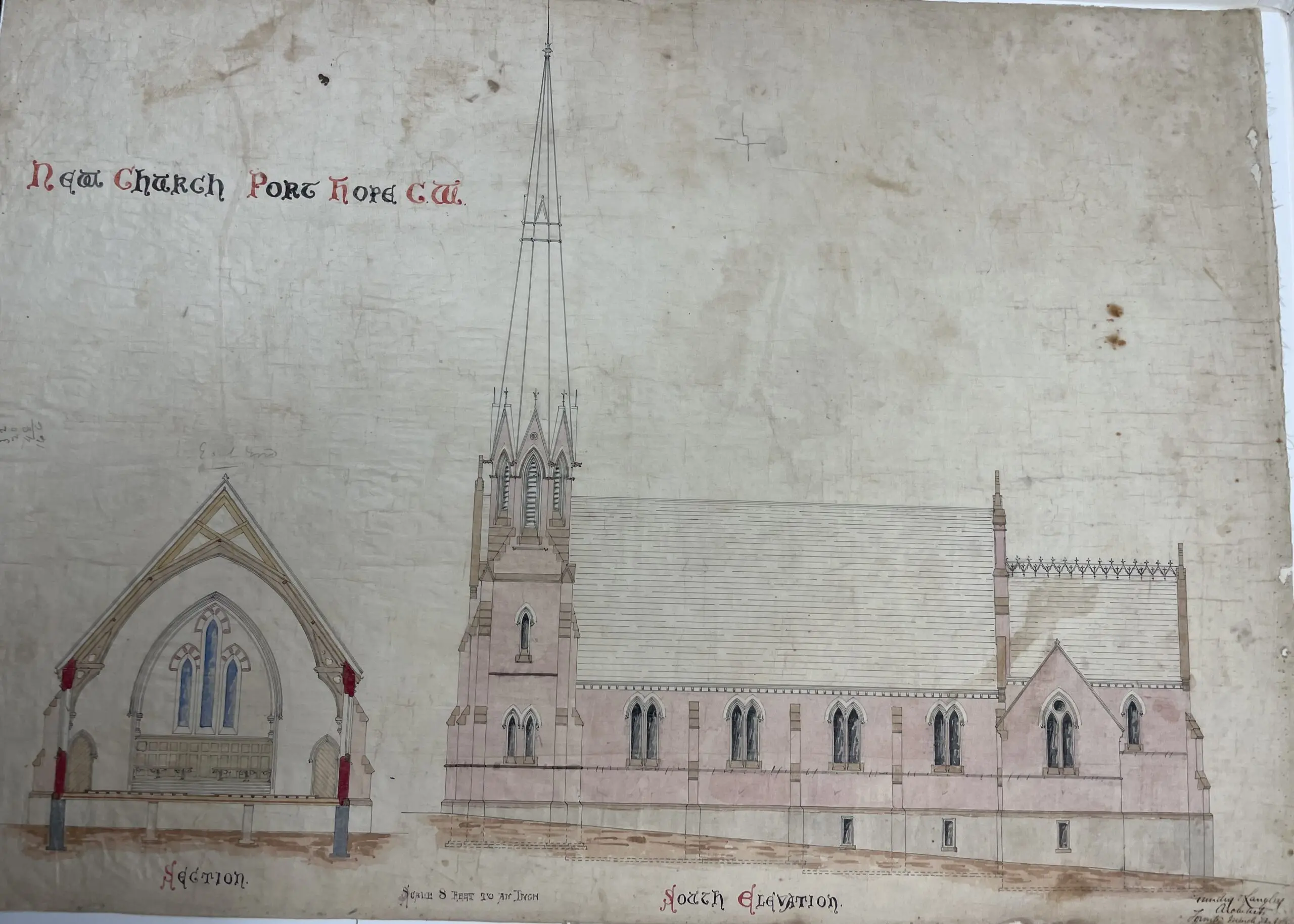
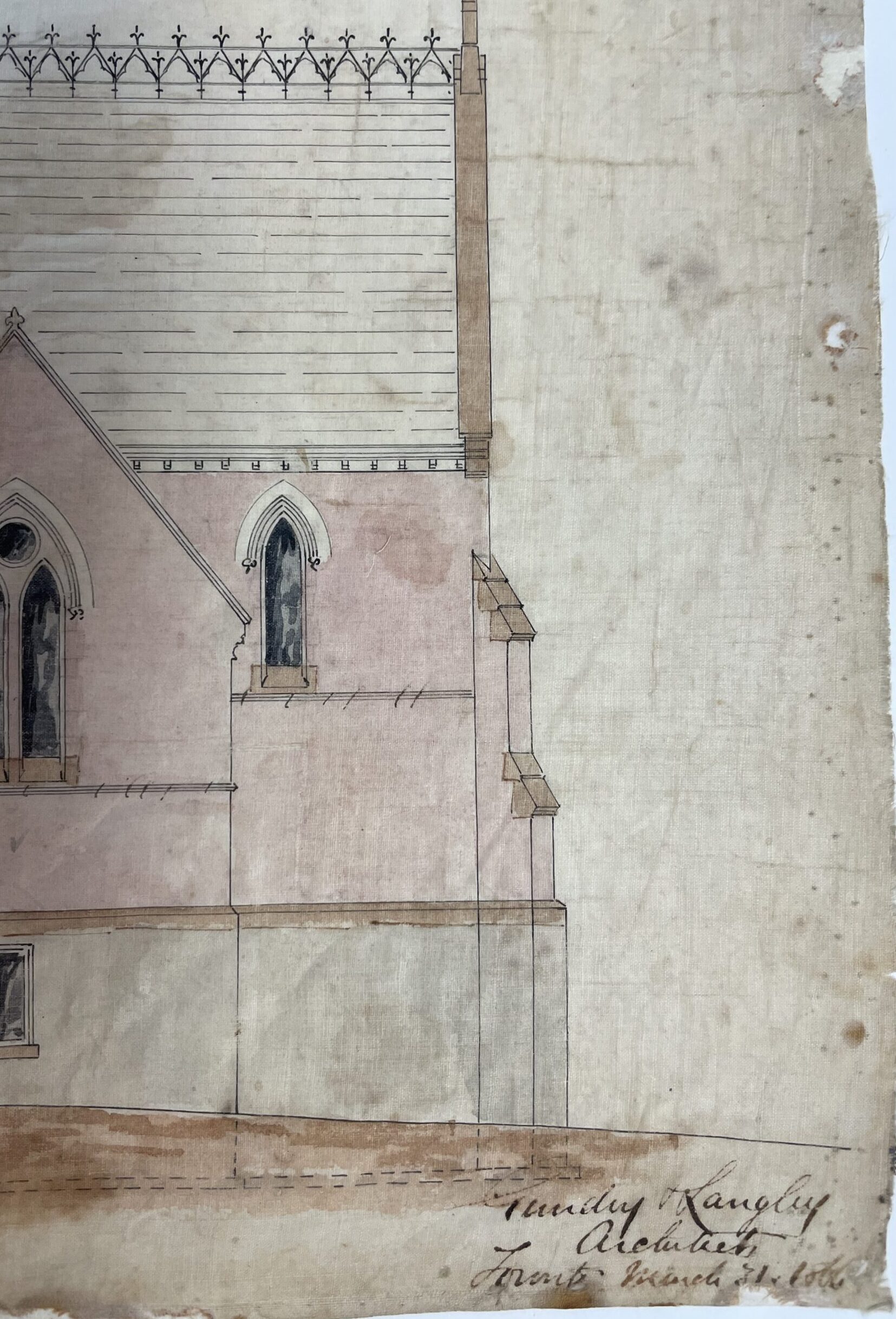
Q – Questions
The Archives often receives questions about donating prayer books and bibles, especially if they are pre-1900. Unfortunately, unless there is something special about them, such as having belonged to a bishop with their signature or notes inside, we do not accept them.
R – Restricted Access
Some records that are held by the Archives are considered to be restricted access due to privacy considerations. The most often requested of these records are the Parish Registers. The Archives follows the direction of the Archives of Ontario and provides public access only to baptisms to 1918, marriages to 1941 and burials to 1951. Records after those dates can be released to the person named in the record or their next of kin, along with proof of ID.
S – Scrapbooks
Scrapbooks can be a fun way of documenting the history of a parish and may include pamphlets, newspaper clippings, photographs and even sometime items made of fabric, such as ribbons. Some scrapbooks are primarily newspaper clippings, which, due to the acidic nature of newspaper, tends to be difficult to preserve well. These types of scrapbooks are also often missing contextual information, such as written explanations, to help understand the overall purpose of the scrapbook. Were they just newspaper articles the person found interesting, or did the newspaper articles have some sort of common theme to the person compiling the scrapbook? However, the Archives holds a lovely example of a scrapbook from St. Nicholas, Birch Cliff. This scrapbook documents the history of St. Nicholas from 1912 until 1987, and the first pages include a memorial book plate from a bible salvaged from the 1916 fire, an image of the tent used for services before the building was rebuilt and a copy of the original 1923 building fund poster. Someone has taken the time to identify the items that are attached to the pages, making it easy to maintain order even though the pages have been removed from the cover to allow for better storage.
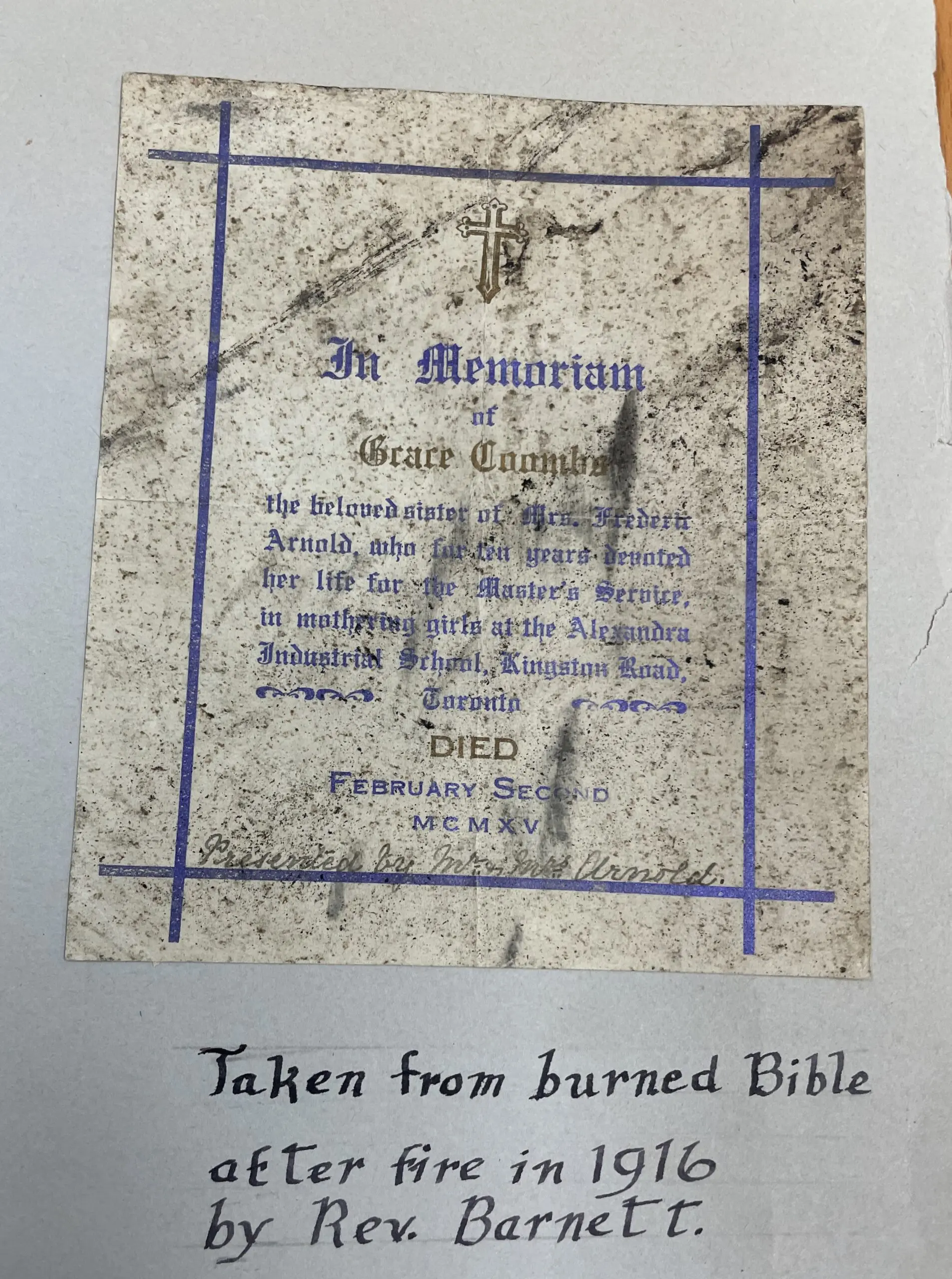
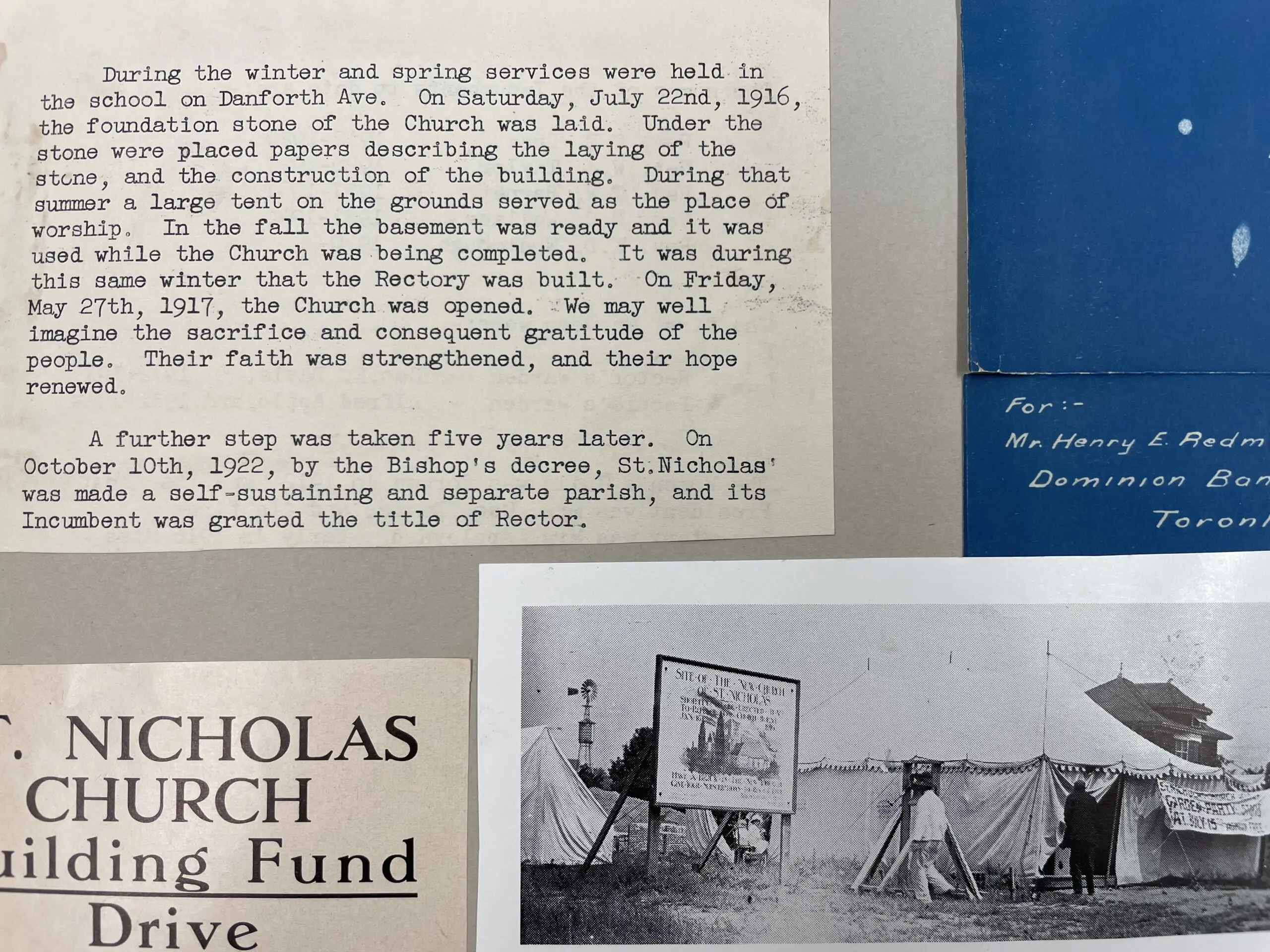
T – Temperance Society
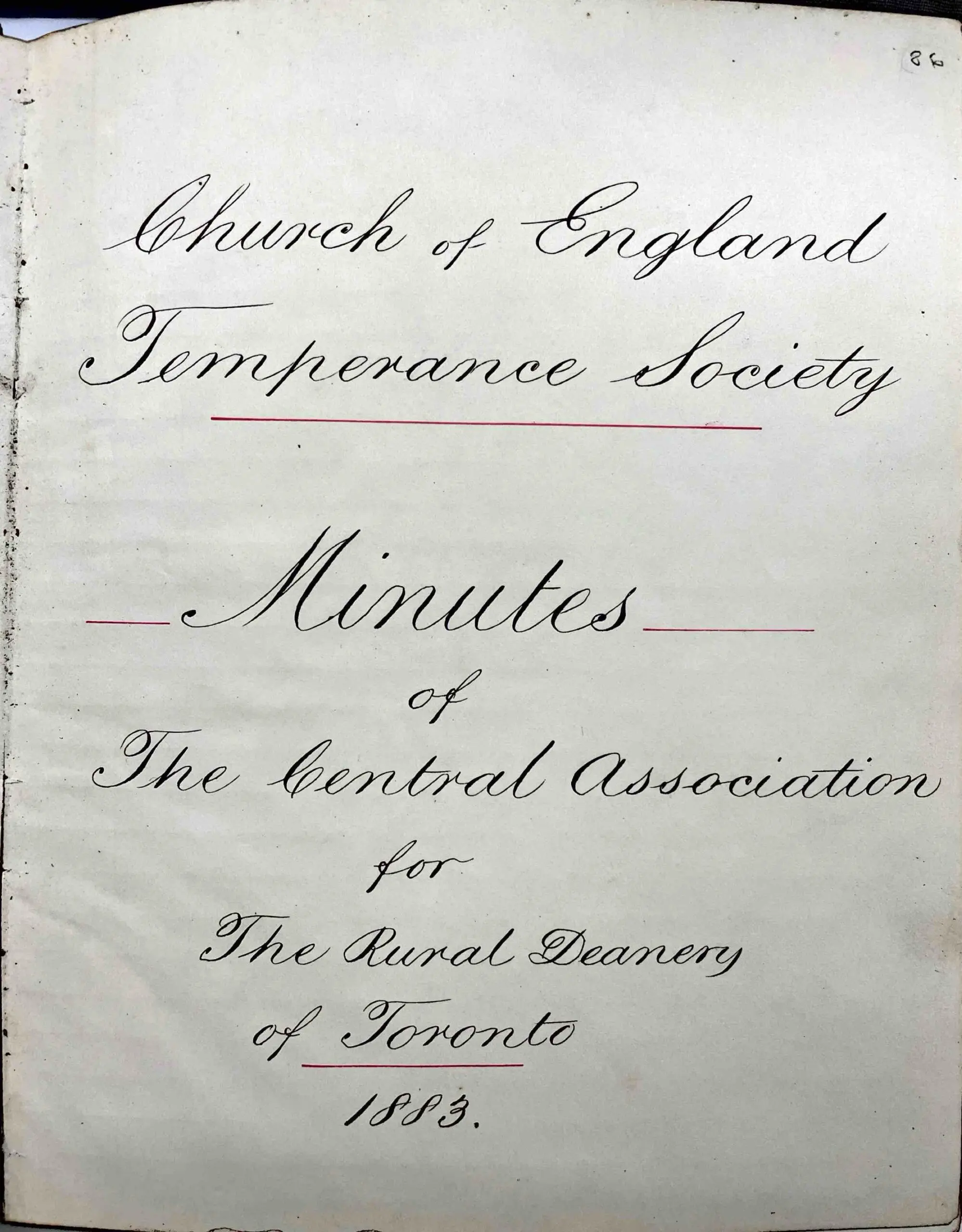
On April 13, 1883, a group of clergy from parishes within the City of Toronto met to form a Temperance Society central association for the Rural Deanery of Toronto with the “view of unity of action as to their work, and of adopting measures for increasing the number as well.” At the June 1883 Synod meeting, the bishop’s charge mentioned the good works of the Temperance Society central association for the Rural Deanery of Toronto and encouraged that “the present session of Synod must not be allowed to close without . . . forming an energetic and capable Diocesan association of the . . . Temperance Society.” In November 1883 a Diocesan Temperance Society was established, and the Temperance Society Central Association held its final meeting on Dec. 3, 1883. The Archives holds the 1883 minute book for the Temperance Society Central Association for the rural deanery of Toronto, as well as the 1883-1894 minute book for the Temperance Society of the Diocese of Toronto. Another year we may have to touch on Rural Deaneries as the precursor to Regional Deaneries, as it’s quite amusing to think of Toronto as being a rural deanery.
Next week we will share Archives Awareness U-Z!
